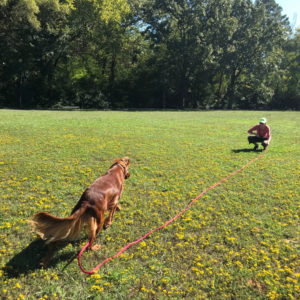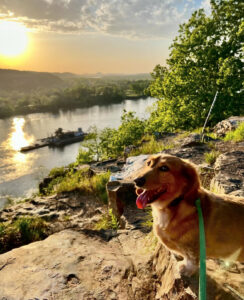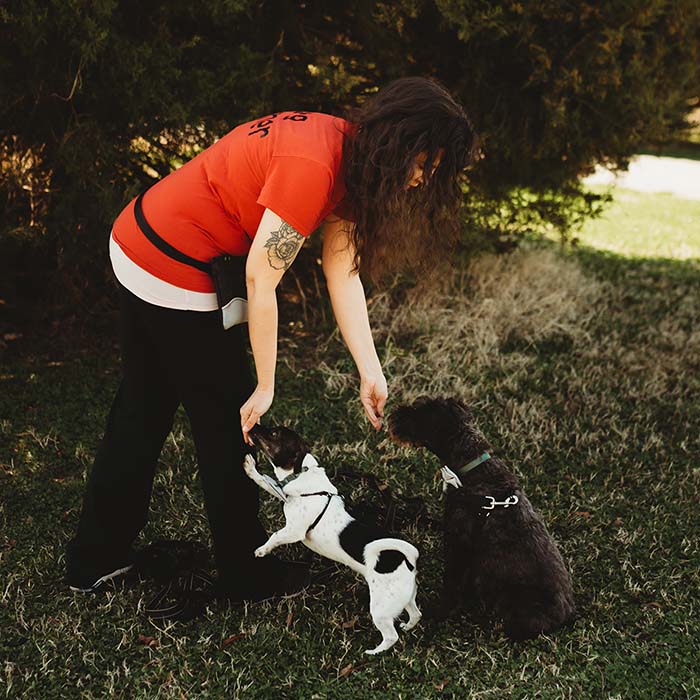Subtle, Little Things
How paying attention helped me become a better dog trainer
Zeke was giant and wild, an oversized black lab that dashed around the house.
One of the first things I look at in a dog with that much energy is their eyes–and his eyes were dilated, telling me that he was overstimulated and way past any threshold of self-control.
It wasn’t always the first thing I watched for–in fact, learning to read a dog took me quite a few months. Dog body language and feedback can be slight and easy to overlook.
My first lesson in that came two years ago in the form of a feathery short-legged pup named Gus. Still interning at Philly Unleashed, I was training him in the barn kitchen when the owner of the dog training company wandered in, looking for a snack.
“He doesn’t like when you pet his back,” she mentioned casually.
“What?” I asked, confused. I’d been trying to reward him with mixing in some petting with short training sessions. He was a nervous little guy on some medication, and I loved him. I was determined to win him over. So I gave him what I thought all dogs loved: some pets on his back.
“See how his skin wrinkles?” she pointed out. “And he lifts his paw, right there. He’s trying to stop you from petting his back.”
I softly touched his back and saw his skin wrinkle as his paw came up and he tried to divert my hand. I touched his chest and his belly — no reaction.
“Chest and belly are fine,” she confirmed. “But not the back.”
She took her pretzel and left.
I sat there and stared at Gus. He didn’t react in any other way. There was no snarl, no growl, nothing. Just some nervous panting and a quick attempt to give me a paw so I didn’t touch his back.
But Zeke was a different dog, in a different part of the country. He didn’t care if I touched his back or his paws. I could scratch right above his tail if I wanted to. But Zeke was also out of control with energy, his pupils pushing wide, his whole body moving rapidly around the house with frantic energy.
We worked on sit and down. Touch and leave it.
Each new thing calmed him down just a little bit more.
He relaxed.
He focused.
For years, I never thought that I was any good at working with dogs. I didn’t think I understood them.
And I didn’t until I learned I could see a lot of what I needed to know in the tiniest of details.



